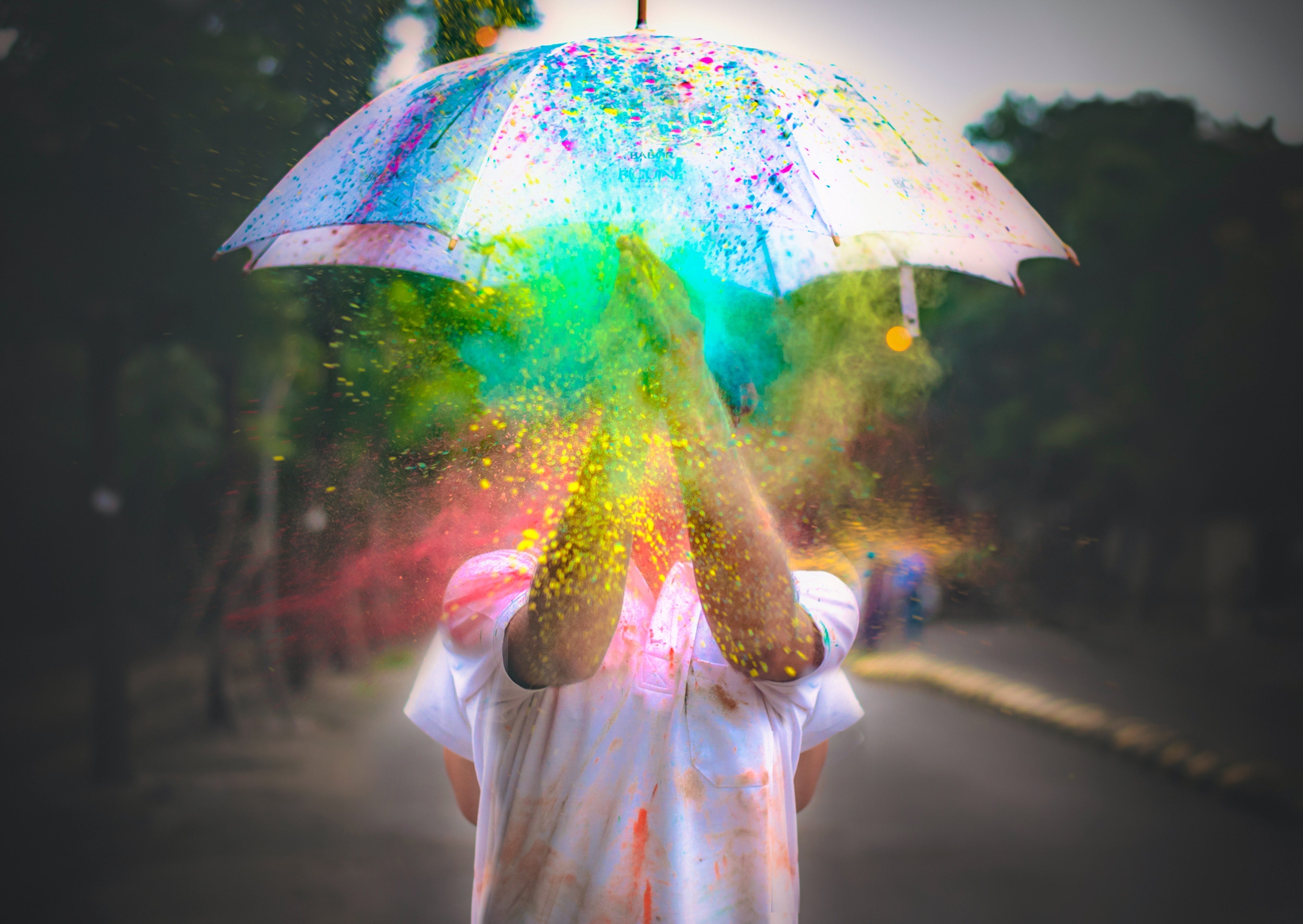Updated: 08.04.25
Struggling to explain Pride Month to your kids? It can be tricky to find the right words.
Teaching children about Pride Month and LGBTQ rights is essential. It’s a chance to learn, celebrate, and have fun together.
Pride Month, celebrated every June, honors the LGBTQ+ community’s history and ongoing fight for equality. 
While discussing LGBTQ+ rights with kids can feel challenging, it’s vital they understand its connection to Pride. Here’s how to break it down for them.
What Does LGBTQ Stand For?
LGBTQ stands for Lesbian, Gay, Bisexual, Transgender, and Queer or Questioning. The "+" in LGBTQ+ includes other identities like asexual, intersex, and more, ensuring everyone feels represented.
During Pride Month, rainbow flags—symbols of support—wave proudly. Designed by Gilbert Baker in 1978, the original flag had eight colors, later simplified to six: red (life), orange (healing), yellow (sunlight), green (nature), blue (harmony), and purple (spirit).
Pride Month commemorates the 1969 Stonewall Uprising in New York City, a pivotal moment when patrons, including trans activists like Marsha P. Johnson, resisted a police raid at the Stonewall Inn. This sparked the modern LGBTQ+ rights movement.
Over 55 years later, progress continues toward equality, making it crucial for kids to learn about these identities and their significance.
What Does Pangender Mean?
Pangender describes someone who identifies with all genders or feels their gender cannot be strictly labeled as female or male. It’s about embracing a broad, inclusive gender identity.
What Is Pride Month?
Pride Month is a joyful celebration and a reminder that LGBTQ+ people deserve equal rights. It’s for everyone—whether you’re part of the community or an ally—to join in.
It’s a time to feel proud of who you are and to honor those who’ve supported you along the way.
Why Do We Call It Pride?
The term "Pride" reflects the fight for dignity and personal rights. It began as a call for equality by the LGBTQ+ community, evolving to celebrate self-acceptance and resilience in the face of discrimination.
How Has Pride Changed Over Time?
Pride started as a protest march in the 1970s. Today, it’s a vibrant mix of parades, festivals, and educational events, reflecting growing acceptance and visibility for the LGBTQ+ community.
While the fight for equality continues, Pride now celebrates all aspects of identity, tackling issues like homophobia and transphobia through community and advocacy.

Photo by Tanushree Rao on Unsplash
Why Is Pride So Important?
Coming out can be tough, and Pride offers a safe space for LGBTQ+ individuals to be themselves without judgment. It’s a moment to celebrate uniqueness and find community.
What Does the LGBTQ Flag Mean?
The rainbow flag, created by Gilbert Baker in 1978, is a global symbol of Pride. Recent versions include black and brown stripes for Black and Latinx communities, pink and blue for transgender people, and a white stripe for inclusivity.
How Families and Kids Can Celebrate Pride
Pride Month is for everyone to show support. Families can attend local parades, read LGBTQ+-inclusive books, or host craft sessions to make rainbow flags. It’s about love and acceptance.
What If They Still Have Questions?
If your kids have more questions, try resources like www.stonewall.org.uk/young-stonewall or www.theproudtrust.org/for-young-people.
Be open and honest, respecting their beliefs while explaining Pride’s importance to the LGBTQ+ community.
What If They Think They Might Be Part of the LGBTQ+ Community?
If your child feels they might identify as LGBTQ+, here’s how to support them (note: this is general guidance, not expert advice):
- Listen without judgment and reassure them you’re there for support.
- Provide access to resources like books, websites, or supportive friends.
- Consider attending LGBTQ+-friendly events together to help them explore their feelings in a safe environment.
Wrapping Up
Teaching kids about Pride Month means using simple words to explain complex ideas. Tell them LGBTQ+ stands for people who love or identify differently, and Pride is about being happy with who you are.
Share why it’s called Pride—because it’s about standing tall despite challenges. Show them the rainbow flag as a sign of love and support.
Pride isn’t just a U.S. or UK event—it’s global, with parades and festivals worldwide, including major UK cities like London, Manchester, and Brighton.
For deeper learning, consider watching family-friendly documentaries like Out & Around (available on streaming platforms) about LGBTQ+ families, or join a local Pride event.
Main image by Divya Agrawal on Unsplash
Frequently Asked Questions
What is the best age to talk to kids about Pride Month?
You can start as early as age 4 or 5 with simple ideas like love and acceptance. Adjust the depth based on their maturity and questions.
Why is Pride Month in June?
June marks the 1969 Stonewall Uprising, a key event in the fight for LGBTQ+ rights, sparking the modern Pride movement.
How can I make Pride discussions age-appropriate?
For younger kids, focus on love, acceptance, and celebrating differences. For older kids, discuss equality and history using examples like the rainbow flag.
Are there kid-friendly Pride events in the UK?
Yes, many UK cities like London, Brighton, and Manchester host family-friendly Pride festivals with parades, crafts, and activities for kids.
What if my child is confused about their identity?
Listen, offer support, and provide resources like Stonewall or The Proud Trust. Let them explore at their own pace without pressure.





Share:
Tips for Maintaining Your Kids Battery Electric Ride on Car
Is Heating Food in Plastic Containers Destroying Our Health?